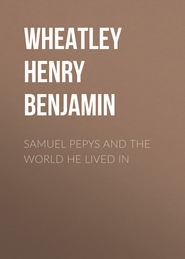По всем вопросам обращайтесь на: info@litportal.ru
(©) 2003-2024.
✖
How to Catalogue a Library
Автор
Год написания книги
2018
Настройки чтения
Размер шрифта
Высота строк
Поля
The Museum rule (XIII.) is: "German names in which the letters ä, ö, or ü occur, to be spelt with the diphthong æ, œ, and ue respectively."
Mr. Cutter follows this, and adds to it (rule 25):—
"In Danish names, if the type å is not to be had, use its older equivalent aa; in a manuscript catalogue the modern orthography ä should be employed. Whatever is chosen should be uniformly used, however the names may appear in the books. The diphthong æ should not be written ae, nor should ö be written oe; ö, not oe, should be used for ø.
"In Hungarian names write ö, ü, with the diæresis (not oe, ue), and arrange like the English o, u.
"The Swedish names, ä, å, ö, should be so written (not ae, oe), and arranged as the English a, o."
The Cambridge rule (10) is as follows: "German and Scandinavian names, in which the forms ä, ö, ü, å, occur, to be treated, for the purpose of alphabetical sequence, as if spelt with ae, oe, and ao respectively. In German names ä, ö, ü, to be printed ae, oe, ue."
The Library Association rule (44) is: "The German ä, ö, ü, are to be arranged as if written out in full ae, oe, ue."
The first part of the Cambridge rule and the whole of that of the Library Association is likely to lead to confusion. The only safe way to deal with these letters is either to spell them out, or to arrange them as if they were English letters. The English alphabet must be pre-eminent in an English catalogue.
The rule that M', Mc, St., etc., should be arranged as if spelt Mac, Saint, etc., stands on a different basis from the above, and the reason is, as stated by Mr. Cutter (rule 173), "because they are so pronounced." When we see St., we at once say Saint, and therefore look under Sa.
The Index Society rule enters fully into this point, and explains what is a difficulty to some: "6. Proper names with the prefix St., as St. Albans, St. John, to be arranged in the alphabet as if written in full, Saint. When the word Saint represents a ceremonial title, as in the case of St. Alban, St. Giles, and St. Augustine, these names to be arranged under the letters A and G respectively; but the places St. Albans, St. Giles, and St. Augustine will be found under the prefix Saint. The prefixes M' and Mc to be arranged as if written in full, Mac."
When several titles follow one heading, it is necessary to use a dash in place of repeating the heading, and there are one or two points worthy of attention in respect to this dash.
The Library Association rule is: "35. The heading is not to be repeated; a single indent or dash indicates the omission of the preceding heading or title."
The Index Society rule is rather fuller: "17. A dash, instead of an indentation, to be used as a mark of repetition. The dash to be kept for entries exactly similar, and the word to be repeated when the second differs in any way from the first. The proper name to be repeated when that of a different person. In the case of joint authors the Christian names or initials of the first, whose surname is arranged in the alphabet, to be in parentheses, but the Christian names of the second to be in the natural order, as Smith (John) and Alexander Brown, not Smith (John) and Brown (Alexander)."
The reason for the last direction is that the Christian name is only brought back in order to make the alphabetical position of the surname clear; and as this is not necessary in respect to the second person, the names should remain in their natural order.
Dashes should be of a uniform length, and that length should not be too great. It is a great mistake to suppose that the dash is to be the length of the line which is not repeated. If it is necessary to mark the repetition of a portion of the title as well as the author, this should be indicated by another dash, and not by the elongation of the former one; thus:—
Milton (John), Works in Verse and Prose, Printed from the Original Editions, with Life by the Rev. John Mitford. 8 vols. 8vo. London, 1851.
—– Poetical Works, with Notes, Life, etc., by the Rev. H. J. Todd. 6 vols. 8vo. London, 1801.
–– – – Second Edition. 7 vols. royal 8vo. London, 1809.
–– – with Notes, edited by Sir Egerton Brydges. 6 vols. small 8vo. London, 1853.
All the dashes except the first, which represents the author's name, can be got rid of by using the words [the same] or [another edition], etc.
In the alphabetization of a catalogue the prefixes in personal names, even when printed separately, are to be treated as if they were joined; thus:—
De Montfort.
Demophilus.
De Morgan.
Demosthenes.
De Quincey.
Des Barres.
Du Chaillu.
In the case of compound words a different plan, however, is to be adopted. Each word is to be treated as separate, and arranged accordingly. The Index Society rule is as follows: "4. Headings consisting of two or more distinct words are not to be treated as integral portions of one word; thus the arrangement should be:—
Mr. Cutter enters very fully into this point of arrangement in his rules.
It is a very frequent mistake to overlook the fact that the Christian name placed after a surname is merely there for the sake of convenience, and to make it take its place with the words that follow in their natural position. For instance, in the above examples John Grave stands at the head, because Grave is the only portion that can be considered in the alphabet. If, however, there was a Charles or a Henry Grave, they would take their position above John Grave, because their Christian names are all in the same category.
The order in which the entries under an author's name should be arranged is dealt with in the British Museum rules LXIX. to LXXVII., but it is not necessary to quote all these in this place.
The Library Association rules put the matter very succinctly:—
"38. The works of an author are to be arranged in the following order:—
"a. Collected works.
"b. Partial collections.
"c. Individual works in alphabetical order of titles, under the first word not an article or a preposition having the meaning of 'concerning.'
"Translations are to follow the originals in alphabetical order of languages."
The Cambridge Rule is as follows:—
"38. The works of an author to be entered in the following order:—
"(1) Collected works in the original language.
"(2) Translations of collected works.
"(3) Collections of two or more works.
"(4) Separate works.
"(5) Entire portions of a separate work to follow that work.
"(6) Selections or collected fragments."
This question of arrangement is distinctly one which may be modified according to the special needs of a particular library. It only becomes a question of importance in a very large library, because in a small library the number of entries under one author are not often very numerous. I should take exception to the arrangement of separate works in alphabetical order, because in the case of titles other than those of plays, poems, novels, etc. (which have arbitrary titles), there is little that is suitable for such arrangement, and it is practically no order at all. I should prefer the chronological order as the most useful for reference. In the case of those authors whose works are voluminous, some system of classification of the separate works is needed. Thus Milton's prose works should be arranged separately from his poems.
It is also a question whether translations should not be kept together at the end. Abstracts of the contents of collected editions of an author's works greatly add to the convenience of a catalogue. It is almost a necessity in a lending library, as by this means you can send for the particular volume you require. The adoption of the plan at the British Museum would save a reader from sending for a whole set of books when he only wants one volume. Mr. Parry, in his evidence before the Commission, alludes to this point. He said: "I remember there was one rule as to collected works, that each separate work in the collection was to be expressed upon the title that we wrote, and afterwards printed separately under the collected heading in the catalogue; that was abandoned, I remember, and I certainly thought it was an important abandonment: it was the abandonment, as it seemed to me, of a useful principle; but it was abandoned, I believe, for the purpose of expediting the catalogue; and in all respects we endeavoured as much as possible to shorten our labour consistently with accuracy" (p. 467).
Mr. Cutter deals with this point in his rule 197: "Arrange contents either in the order of the volumes or alphabetically by the titles of the articles." After giving an example, he adds: "It is evident how much more compendious the second method is. But there is no reason why an alphabetical 'contents' should not be run into a single paragraph.
"The titles of novels and plays contained in any collection ought to be entered in the main alphabet; it is difficult then to see the advantage of an alphabetical arrangement of the same titles under the collection. Many other collections are composed of works for which alphabetical order is no gain, because the words of their titles are not mnemonic words, and it is not worth while to take the trouble of arranging them; but there are others composed of both classes in which such order may be convenient."









